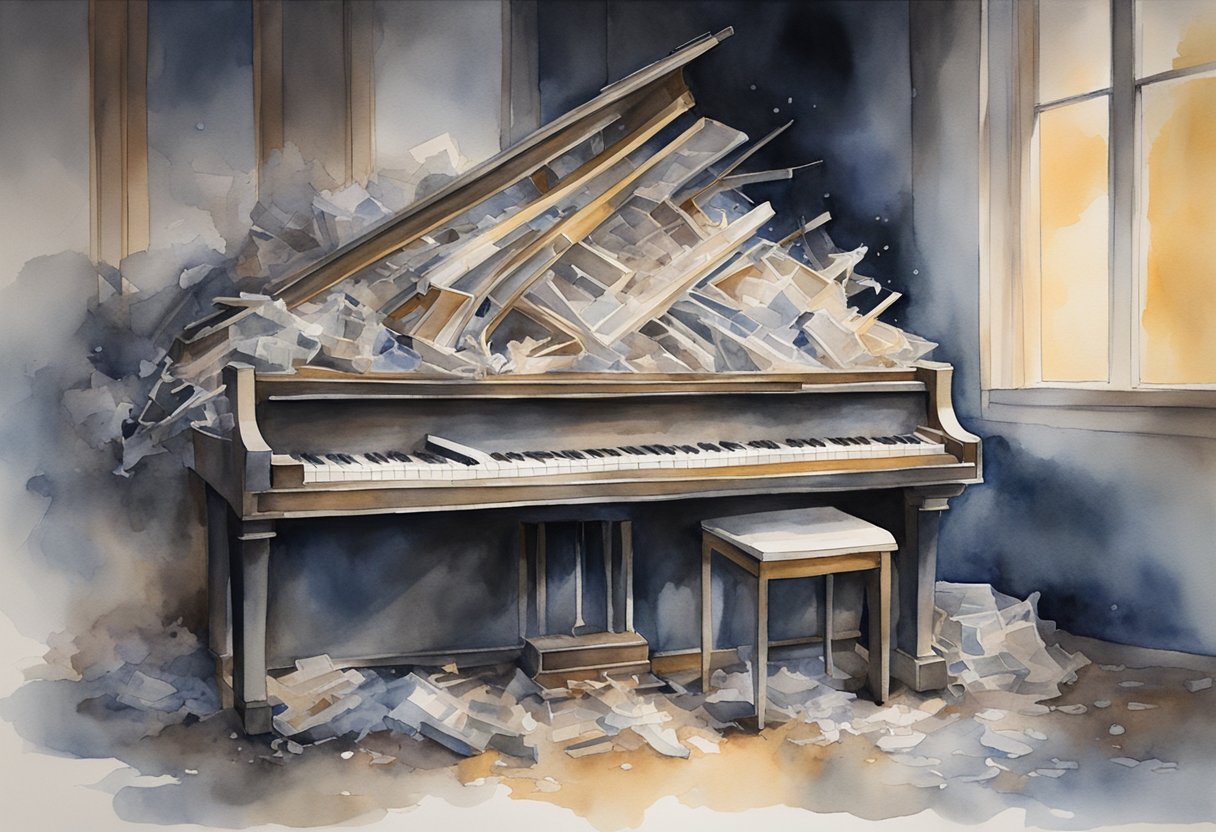As an Amazon Associate I earn from qualifying purchases.
Piano parts can indeed hold value, but their worth varies greatly depending on factors like age, condition, and rarity. For instance, the intricate woodwork of an antique piano’s legs or the ivory from its keys could appeal to collectors or craftsmen looking to repurpose these materials.
As a professional pianist, I’ve encountered old pianos where the action parts—hammers, dampers, and strings—were sought after by students or local artists for creative projects, or by instrument repair experts in need of specific, hard-to-find components.
Want to Learn Piano?Click Here

When assessing the value of piano parts, consider their potential for reuse. In my experience, upcycling has become increasingly popular, and I’ve seen piano parts transformed into everything from stunning art installations to quirky furniture. For example, old piano keys can be repurposed into unique wall decor or jewelry, while soundboards might serve as a canvas for painters or become a focal piece in a modern sculpture.
Your individual piano parts’ value can also hinge on their historical significance or brand. Working with numerous pianos over the years, pieces from famed manufacturers like Steinway or Bösendorfer have commanded higher interest due to their esteemed lineage. Moreover, some antique piano parts are treasured simply for the era they represent; a vintage antique piano will often have a story, craftsmanship, and a legacy that cannot be replicated today. If you’re curious about the possible worth of your piano’s components, it’s essential to delve into their history and usability to understand their true potential.
Assessing the Value of Piano Parts

When venturing into the world of pianos, it’s important to understand the value of individual piano parts, as they can significantly affect a piano’s overall worth.
Factors Impacting Piano Parts Value
The age, brand, and condition of piano parts are critical factors in determining their worth. Older parts from renowned brands like Steinway, Mason & Hamlin, or Baldwin are often sought after if they’ve been well-maintained.
Poor condition, however, can diminish the value, regardless of age or brand. The specific model and the wood used can also play a substantial role in the valuation. For example, the hammers and strings from a classical Steinweg may be more valuable due to their historical significance and craftsmanship.
Commonly Replaced Piano Parts
Some parts are replaced more frequently due to wear and tear:
- Hammers: These felt-covered wooden parts can become worn with use, affecting the instrument’s tone.
- Strings: Broken or corroded strings need to be replaced to maintain sound quality.
- Tuning pins: Loose pins can detune a piano quickly, so they’re often changed during restoration.
- Plastic parts: Modern pianos might have plastic components which are less valuable than old ivories or wood.
Which Scrap Piano Parts Hold the Most Value
Looking to sell or buy scrap piano parts? Here’s what holds the most value:
- Wood: High-quality wood like ebony or mahogany from the body or keys.
- Metal: Cast iron plates and brass hardware can fetch a reasonable price.
Remember, a fully restored piano can be worth more as a whole than the sum of its parts, but for some musicians or collectors, individual parts can be a treasure trove, especially if they’re from a high-end, historic, or rare piano.
This table shows the general value of these parts:
| Piano Part | Material Likely Used | Potential Scrap Value Category |
|---|---|---|
| Cast Iron Plate | Cast Iron | Moderate to High |
| Strings | Steel, Copper Wound | Low to Moderate |
| Hammers | Wood, Felt | Low |
| Action Parts | Various Metals, Woods, Plastics | Low to Moderate |
Where To Sell Your Piano Scrap Parts
If you’re looking to part with an old piano, you might wonder if the individual parts hold any value. The good news is, several components within your piano can be sold as scrap or repurposed.
Metal parts such as strings and the cast iron plate are often sought after for their scrap value. Wooden elements, especially from vintage pianos, can fetch a good price for their craftsmanship and material.
Here’s where you can sell your piano parts:
- Local Scrap Yards: These are excellent places for recycling metal parts. Call ahead to confirm they accept piano parts.
- Carpentry Shops: Quality wood from piano cases may interest local woodworkers or artists.
- Online Marketplaces: Websites like eBay or Craigslist can connect you with buyers looking for specific parts.
Consider the following options laid out in a straightforward manner:
| Selling Point | Item Type | Potential Buyers |
|---|---|---|
| Local Scrap Yards | Metal components | Metal recyclers |
| Carpentry Shops | Wooden parts | Craftsmen, artists |
| Online Marketplaces | Various parts | Collectors, DIYers |
Hello & thanks for stopping by! I’m a professional concert pianist and piano instructor. In the United States, I’ve given successful performances in several places including New York, Florida, Connecticut, & New Jersey, I have also performed internationally in Italy and made my Carnegie Hall debut in 2014. I enjoy blogging about the piano, the art of performance, general music, current events and the latest in music production.
